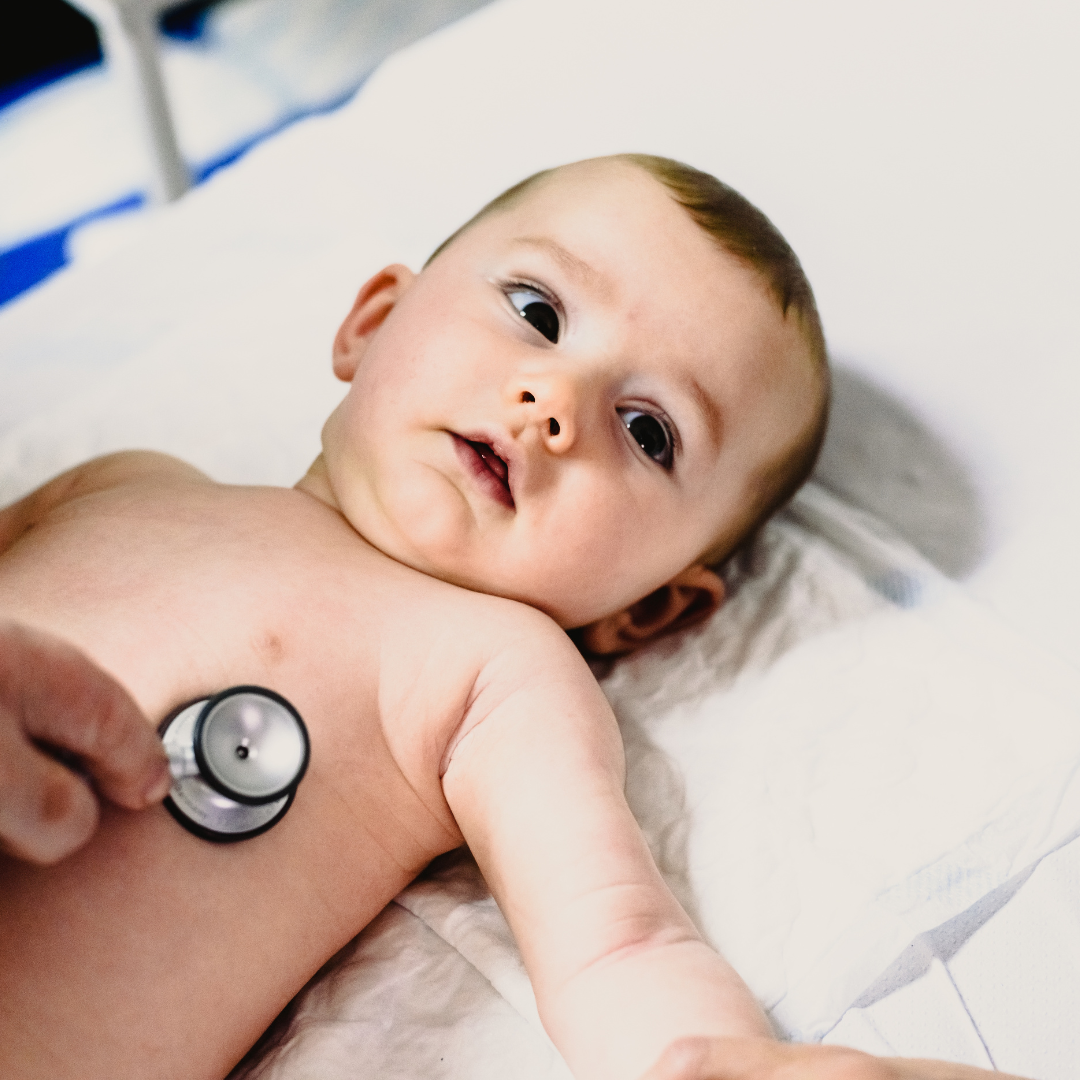Symptoms of Strep in kids
Most parents are familiar with strep throat or impetigo.
But strep infections in kids can show up in many different ways, some of them pretty weird. And they can get missed or mis-diagnosed, which his dangerous because left untreated, strep can cause serious complications.
This post goes over some of the weird signs of strep infection pediatricians sometimes see.
What causes strep?
Strep infections are usually caused by a bacteria called Group A Streptococcus (GAS, also called Strep pyogenes). Note that this is different from the “Group B strep” that is part of routine prenatal testing.
What most parents don’t know about strep
Group A strep spreads easily. Most adults have had it, often more than once. Thankfully, it is still very sensitive to common antibiotics.
But here’s what surprises many parents: a healthy immune system can sometimes clear strep on its own. Your child may start to feel better without antibiotics.
But that does not mean it is safe to skip treatment.
Without antibiotics (or if you don’t complete the full course of antibiotics), strep can trigger the body's immune system to attack itself. That is where we see long-term complications, such as heart inflammation. Although these complications are rare, they can be life-changing, which is why we take strep infections seriously.
With that said, the risk of these complications doesn’t seem to be present in kids under age 3 years. They are also less likely to catch strep (PMID: 10532665; 8045744; 22965026).
For kids age 3 and up, we always treat confirmed strep infections with a full course of antibiotics. For kids under 3 years, there is a clinical judgment piece. We sometimes test and treat if there is a clinical reason to do so.
The Pediatrician Mom Tip: Even if your child is feeling better, never stop the antibiotic early. Incomplete strep treatment increases the risk of serious complications. If your child won’t take the medicine, ask your pediatrician about alternatives.
Common types of Strep infection
Strep throat
Most common in children over age 3. More information (including when we test and how we treat) can be found here.
Symptoms
Fever
Sudden sore throat
Red, swollen tonsils (sometimes with white patches)
Red spots (petechiae) on the roof of the mouth
Swollen lymph nodes in the front of the neck, under the angle of the jaw
Headache
Fatigue and malaise
Abdominal pain, vomiting or nausea (often a missed presentation)
Here are some helpful pictures.
Scarlet Fever
This is a strep infection with a characteristic rash that is common in children aged 5-15y. Before antibiotics, this infection could be fatal - and there are many depictions within historic literature of characters that died of this disease, including Beth, from Little Women.
Signs include:
Red rash with a sandpaper-like texture
Strawberry tongue
Begins on the neck, underarms, or groin and then spreads quickly.
The Pediatrician Mom Tip: Scarlet fever rash usually fades within a week, but the skin of the fingers, toes and groin can peel for several weeks after infection.
Peri-anal (“butt”) strep
I know, I know. You’re saying WTF. Although this is rash has a classic appearance, it is sometimes misdiagnosed as a fungal or irritant diaper rash.
What it looks like:
Bright red rash around the anus with clear borders
Tender or itchy
May have blood in the stool or discomfort with bowel movements
May also see swollen nodes
If you really want to see pictures of the rash, click here and here.
Impetigo
Often seen in ages 2 to 5, especially when the skin starts to get raw because of drool or a runny nose.
Key sign: Honey-colored crusting near the nose or mouth. You can learn more here.
Infection in kids under 3y
Strep Infection in Children Under Age 3
You may have heard that toddlers “do not get strep.” It is mostly true. Research shows that true strep throat is rare in children under age 3.
In this age group, we usually test only when there is both:
A known contact with confirmed strep infection and
Symptoms consistent with strep
Complications from untreated strep are extremely rare in children under age 3, which is why testing and treatment guidelines are different. But, as with anything, there is a clinical judgment piece too. And rare is not impossible.
When young kids have strep infections, the symptoms can look a little different:
Prolonged congestion or cough
Low-grade (or no) fever
Fussiness
Poor feeding
Swollen glands / lymph nodes
When does strep become dangerous in kids?
Invasive Group A Strep: The Serious Forms
These are the cases that make the news. They are extremely rare but very serious. Children often need hospitalization, IV antibiotics, and sometimes respiratory or life support.
The risk for these serious complications increases with weakened immunity or when strep occurs at the same time as certain viral infections such as influenza, varicella (chickenpox), or C-19.
Keeping your child up to date on vaccinations (especially flu, covid-19 and varicella) can help reduce this risk.
Toxic Shock Syndrome:
Can begin anywhere strep has entered the body
Fever, chills, vomiting
Then rapid progression to shock and organ failure
Necrotizing Fasciitis (Flesh-Eating Disease):
Rapidly worsening pain, swelling, and redness
Skin can become blistered or black as tissue dies
Requires immediate emergency care
Complications of Strep
Some complications are caused by the bacteria itself. Others are caused by the immune system reacting to the infection.
Local or Deep Infection:
Abscesses
Cellulitis
Bloodstream infection (sepsis)
Bone or joint infection
Meningitis
This is why treating strep completely and following up if symptoms worsen is so important.
Autoimmune Complications
These are rare but serious. They usually occur several weeks after the initial infection. Treating strep properly helps lower the risk of some, but not all, of these conditions.
Acute Rheumatic Fever
More common in parts of the world with limited access to antibiotics. I have only seen it once in my career.
Immune system attacks the heart, joints, and brain
Symptoms may include fever, chest pain, shortness of breath, swollen joints, rapid heart rate, or unusual movements
Can appear as early as 1 to 5 weeks after strep, but may be longer.
Here is more information on this condition.
ARF can usually be prevented by adequate treatment of the infection with antibiotics.
Post-Streptococcal Glomerulonephritis (PSGN)
A kidney condition that can occur after any type of strep infection. Unfortunately, antibiotic treatment does not prevent this complication.
Dark, reddish-brown or “Coke-colored” urine
Swelling around the eyes, hands, feet, or face
High blood pressure
Fatigue, headaches, low urine output
More information can be found here. Most children recover fully, but some need long-term monitoring.
PANDAS (Pediatric Autoimmune Neuropsychiatric Disorders Associated with Strep)
PANDAS is a very poorly understood condition. One theory is that may be caused by antibodies mistakenly attacking parts of the brain after strep infection.
Symptoms:
Sudden / abrupt onset of OCD and restricted eating patterns
Motor or vocal tics
Anxiety or mood changes
Frequent urination
Behavioral regression
Difficulty sleeping
Problems at school
We don’t have great diagnostics or treatment protocols yet, but the AAP recently published helpful info which can be found here.
There are many misleading “treatment” claims online. Families should work with specialists in infectious diseases, psychiatry, psychology and neurology.
NIMH and PANDAS Physicians network provide helpful resources.
When to test a sore throat for strep? How to treat Strep in kids?
A full article on sore throats and when to test for strep here. And more information on strep throat (including treatment) specifically here.







